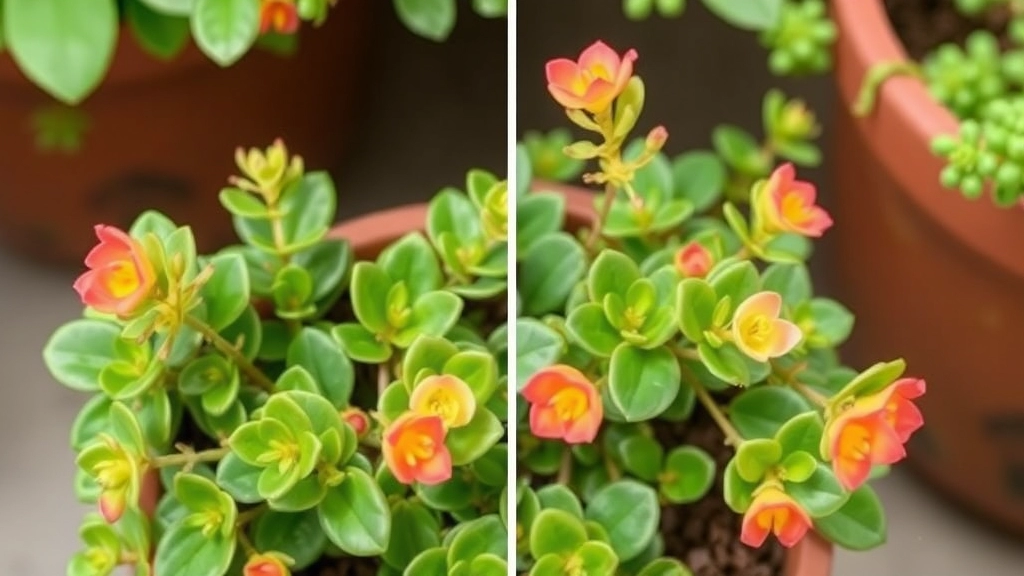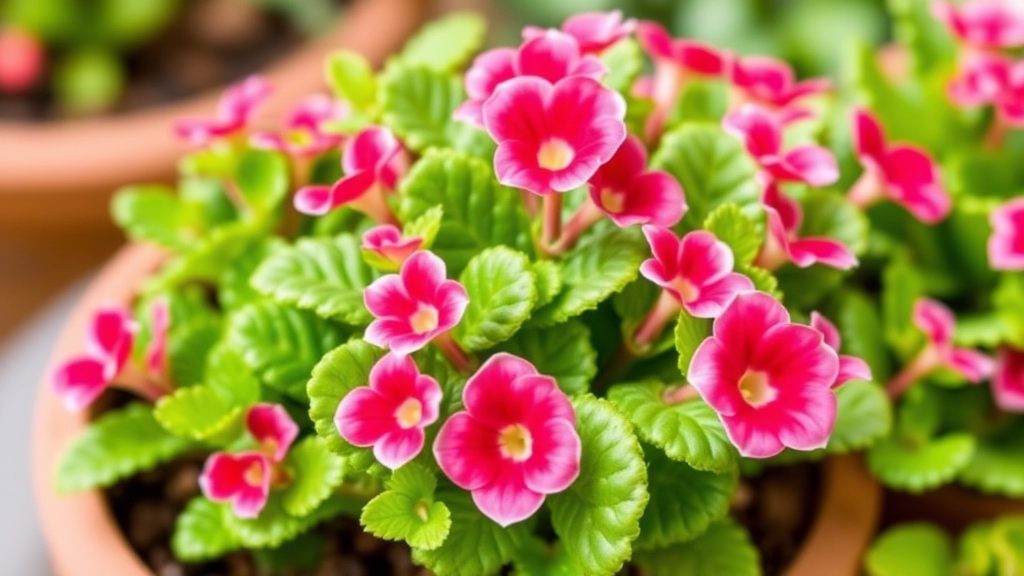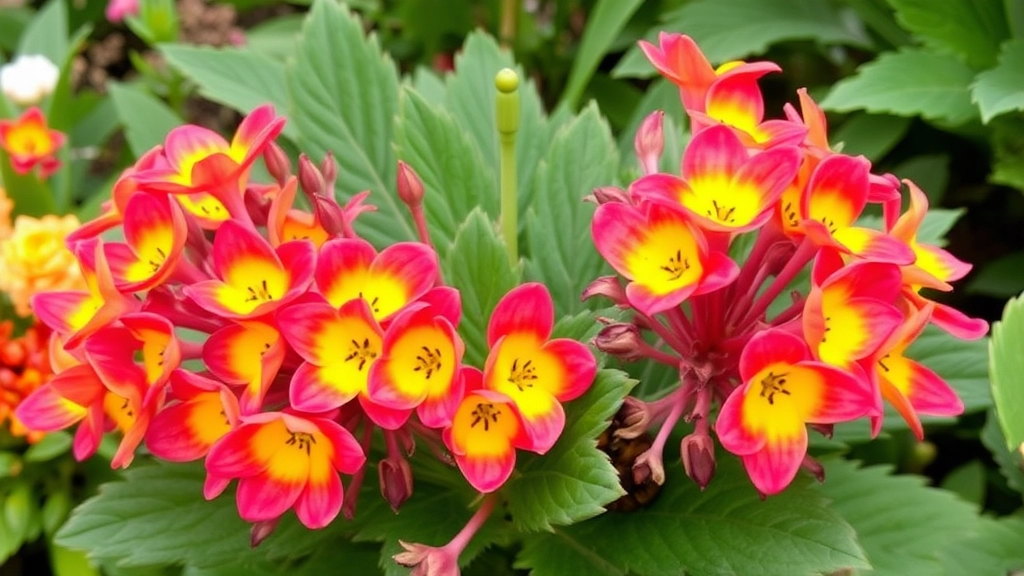Reviving Your Overgrown Kalanchoe
Struggling with an overgrown leggy Kalanchoe? You’re not alone. Many plant enthusiasts face this issue when their Kalanchoe starts to stretch out with sparse leaves. Typically, this happens due to insufficient light, improper watering, or lack of pruning. But don’t worry, I’ve got some practical solutions to help you bring your plant back to its bushy, healthy self.
Solutions to Restore Your Kalanchoe
First, let’s tackle the light issue. Make sure your Kalanchoe gets plenty of bright, indirect sunlight. If natural light is scarce, consider using a grow light.
Pruning and Care Tips
- Pruning: Trim back the leggy stems to encourage bushier growth.
- Watering: Check your watering routine—overwatering or underwatering can stress the plant.
- Repotting: Repot your Kalanchoe in fresh soil to provide essential nutrients.
Follow these steps, and your overgrown leggy Kalanchoe will be on its way to recovery.
Causes of Legginess in Kalanchoe
Have you ever noticed your Kalanchoe stretching awkwardly towards the light, leaving you wondering what went wrong?
Legginess in Kalanchoe is a common issue that can be attributed to several key factors. Understanding these causes can help you take proactive steps to maintain a healthy and vibrant plant.
Insufficient Light
One of the primary reasons for leggy growth is inadequate light. Kalanchoe thrives in bright, indirect sunlight. When it doesn’t receive enough light, it stretches toward the nearest source, resulting in elongated stems and sparse foliage. For more details on how to ensure your plant gets the right light, check out our Essential Kalanchoe Care Tips for Summer Success.
Overwatering
Another contributing factor is overwatering. When Kalanchoe roots sit in waterlogged soil, the plant becomes stressed, leading it to grow taller in search of better conditions. This not only affects its stability but also promotes leggy growth. Learn how to manage watering effectively by reading our Pruning Kalanchoe Plants: Best Tips and Techniques.
Nutrient Deficiency
A lack of essential nutrients can also cause leggy growth. If your Kalanchoe isn’t getting the right balance of nutrientsâparticularly nitrogenâit may become weak and spindly.
Temperature Fluctuations
Temperature extremes can further exacerbate leggy growth. Kalanchoe prefers stable, warm conditions. Sudden changes in temperature can shock the plant, prompting it to grow unevenly.
Poor Soil Quality
Lastly, using low-quality or compacted soil can hinder root development. Healthy roots are vital for nutrient uptake, and if they can’t spread properly, the plant may stretch to compensate.
How to Prune a Leggy Kalanchoe for Bushier Growth

So, you’ve noticed your Kalanchoe stretching out, looking a bit too leggy for its own good. Don’t fret; pruning is a fantastic way to encourage bushier growth and bring back that lush appearance.
Why Prune?
Pruning isn’t just about aesthetics; it helps the plant focus its energy on new growth. When you cut back those long stems, you promote branching, which leads to a fuller, healthier plant.
Steps to Prune Your Leggy Kalanchoe
- Gather Your Tools
- Sharp, clean scissors or pruning shears
- Rubbing alcohol (to disinfect)
- A clean cloth
- Assess the Plant
- Look for the leggiest stems—these are usually the ones that have grown too tall without enough leaves.
- Identify any dead or yellowing leaves that could be removed.
- Make the Cuts
- Aim to cut back those long stems to about 2 to 4 inches above the nearest leaf node.
- This encourages new growth from those nodes.
- Don’t be afraid to take off a good amount; Kalanchoes are resilient!
- Remove Dead Leaves
- Snip away any dead or yellowing leaves to keep the plant healthy.
- This also improves airflow and reduces the risk of pests.
- Clean Up
- Wipe down your tools with rubbing alcohol to prevent spreading any disease to your other plants.
- Dispose of cuttings properly to avoid any potential issues.
Aftercare
Once you’ve pruned, give your Kalanchoe a bit of TLC:
- Water lightly to avoid stressing the plant.
- Monitor light conditions to ensure it gets enough but not too much direct sunlight.
Optimizing Light Conditions to Prevent Leggy Growth
Are you noticing your Kalanchoe stretching unnaturally towards the light? This leggy growth can be a common concern for plant enthusiasts.
Understanding Light Needs
Kalanchoe thrives in bright, indirect sunlight. Here’s how to ensure your plant gets the right amount of light:
- Ideal Location: Place your Kalanchoe near a south or west-facing window. This allows for ample sunlight without harsh direct rays.
- Rotate the Plant: Every couple of weeks, rotate your Kalanchoe. This helps all sides of the plant receive equal light, promoting even growth.
- Supplemental Lighting: If natural light is limited, consider using grow lights. These can provide the necessary spectrum for healthy development.
Signs of Insufficient Light
Keep an eye out for signs that your Kalanchoe might not be getting enough light:
- Leggy Growth: Stretched stems with fewer leaves indicate your plant is reaching for light.
- Pale Leaves: A lack of vibrant colour can signal that your Kalanchoe is not thriving.
- Slow Growth: If your plant seems stagnant, it may need more light.
Adjusting Light Exposure
If you notice these signs, it’s time to adjust:
- Gradual Changes: When moving your plant to a brighter spot, do it gradually to avoid shocking it.
- Monitor and Adapt: Keep an eye on how your Kalanchoe responds. If it starts to perk up, you’re on the right track.
For more tips on ensuring your Kalanchoe thrives, check out our complete guide to Kalanchoe care. Additionally, if you’re dealing with specific varieties, you might find our Kalanchoe Paddle Plant care tips particularly useful.
Adjusting Watering and Fertilization for Healthy Kalanchoe

As we’ve discussed the importance of pruning and light conditions, let’s now delve into how adjusting watering and fertilization can significantly impact the health of your Kalanchoe.
Common Concerns:
- Are you overwatering your Kalanchoe?
- Is your plant getting enough nutrients?
- How do you know when to fertilize?
Watering Tips:
- Frequency: Kalanchoe prefers to dry out between waterings. Aim to water every 2-3 weeks, allowing the top inch of soil to dry out completely.
- Method: Water thoroughly until it drains from the bottom. Ensure the pot has drainage holes to prevent root rot.
- Signs of Overwatering: Yellowing leaves and mushy stems indicate too much water.
Fertilization Guidelines:
- Type of Fertilizer: Use a balanced, water-soluble fertilizer, ideally a 10-10-10 NPK mix, during the growing season (spring and summer).
- Frequency: Fertilize every 4-6 weeks, but avoid fertilizing in winter when the plant is dormant.
- Dilution: Always dilute the fertilizer to half the recommended strength to prevent nutrient burn.
Additional Considerations:
- Soil Quality: Ensure you use well-draining soil to complement your watering routine.
- Seasonal Adjustments: In winter, reduce both watering and fertilization, as the plant’s growth slows down.
Repotting Techniques to Revitalize an Overgrown Kalanchoe
If you’ve noticed your Kalanchoe becoming leggy or overgrown, repotting might be the solution you need.
Repotting not only provides fresh soil but also allows for better root development, which is crucial for a healthy plant.
Ongoing Care Tips to Maintain a Compact, Bushy Kalanchoe
So, you’ve pruned your leggy Kalanchoe and optimized its environment. Now, how do you keep it looking lush and compact?
Regular Monitoring
- Check for Pests: Keep an eye out for aphids or mealybugs. A quick inspection can save your plant from a nasty infestation.
- Leaf Health: Yellowing leaves? It’s a sign to adjust your care routine.
Watering Wisely
- Soil Check: Always check if the top inch of soil is dry before watering. Overwatering can lead to root rot, while underwatering can stress your plant.
- Watering Schedule: Stick to a routine. Generally, once every two weeks works well, but adjust based on your climate.
Fertilization
- Balanced Fertilizer: Use a balanced, water-soluble fertilizer every month during the growing season (spring and summer). This helps promote healthy, bushy growth.
- Dilution is Key: Always dilute fertilizer to half strength to avoid burning the roots.
Light Exposure
- Bright, Indirect Light: Make sure your Kalanchoe is getting enough light. A south-facing window is ideal, but avoid direct sunlight that can scorch the leaves.
- Rotate Your Plant: Give all sides equal exposure by rotating your plant every few weeks.
Pruning and Pinching
- Regular Trimming: Don’t hesitate to pinch back new growth. This encourages branching and a fuller appearance.
- Deadheading: Remove spent flowers to redirect energy to new growth.
Repotting
- Every 2-3 Years: Repot your Kalanchoe when it outgrows its pot. This refreshes the soil and gives roots room to expand.
Personal Touch
- Talk to Your Plant: Seriously, I’ve found that chatting with my plants makes me more aware of their needs. It sounds silly, but it helps!
FAQs on Overgrown Leggy Kalanchoe
What causes a Kalanchoe to become leggy?
A Kalanchoe can become leggy due to insufficient light, causing it to stretch towards the light source. Over time, this results in long, sparse stems.
Why is pruning important for my Kalanchoe?
Pruning helps the plant focus its energy on new growth. By cutting back long stems, you encourage branching, leading to a fuller and healthier plant.
What tools do I need to prune my Kalanchoe?
You will need sharp, clean scissors or pruning shears, rubbing alcohol for disinfection, and a clean cloth.
How should I prune my leggy Kalanchoe?
Identify the leggiest stems and cut them back to about 2 to 4 inches above the nearest leaf node. This promotes new growth from those nodes.
What should I do with dead or yellowing leaves?
Remove any dead or yellowing leaves to keep the plant healthy. This also improves airflow and reduces the risk of pests.
How should I care for my Kalanchoe after pruning?
After pruning, water the plant lightly and monitor light conditions to ensure it gets enough, but not too much, direct sunlight.
How often should I water my Kalanchoe?
Kalanchoe prefers to dry out between waterings. Aim to water every 2-3 weeks, allowing the top inch of soil to dry out completely.
What type of fertilizer should I use for my Kalanchoe?
Use a balanced, water-soluble fertilizer, ideally a 10-10-10 NPK mix, during the growing season (spring and summer). Dilute the fertilizer to half the recommended strength.
How often should I fertilize my Kalanchoe?
Fertilize every 4-6 weeks during the growing season. Avoid fertilizing in winter when the plant is dormant.
What are signs of overwatering my Kalanchoe?
Yellowing leaves and mushy stems are indicators of overwatering. Ensure the pot has drainage holes to prevent root rot.
What type of soil is best for a Kalanchoe?
Use well-draining soil to complement your watering routine. This helps prevent root rot and promotes healthy growth.
Should I adjust my care routine for my Kalanchoe in winter?
Yes, in winter, reduce both watering and fertilization as the plant’s growth slows down.
References
-
How to Prune Leggy Kalanchoe Plants
-
Kalanchoe Plant Care Guide
-
Kalanchoe: How to Grow and Care for Kalanchoe Plants
